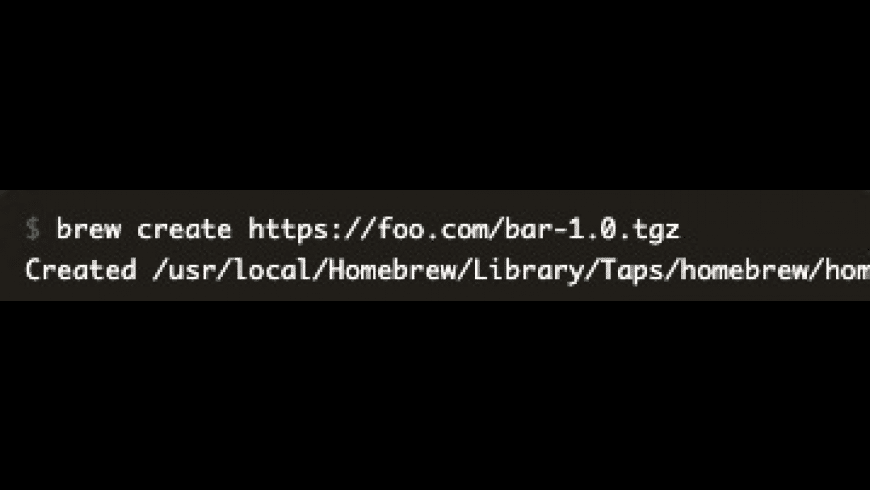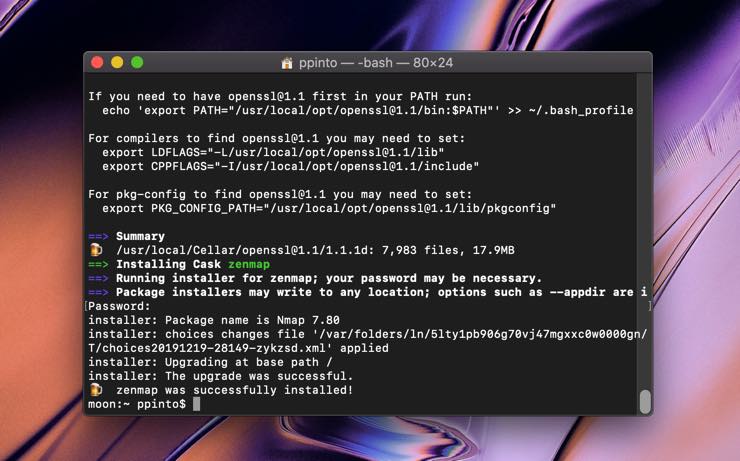Brew Download Mac
Homebrew is a developer’s heartthrob.
Homebrew Installer Jenkins can be installed using the Homebrew package manager. Homebrew formula: jenkins-lts This is a package supported by a third party which may be not as frequently updated as packages supported by the Jenkins project directly. Sample commands: Install the latest LTS version: brew install jenkins-lts.
If you have never heard of it then it’s basically just a package manager that makes it super easy to install different kinds of software and tools onto your Mac. Say if you’re looking to install Git, Ruby or NodeJS or a Unix command-line utility, then simply just by entering one line of code you can install the software on the get-go.

- $ sdk install sbt Homebrew $ brew install sbt ⚠️ Homebrew maintainers have added a dependency to JDK 13 because they want to use more brew dependencies. This causes sbt to use JDK 13 even when java available on PATH is JDK 8 or 11. To prevent sbt from running on JDK 13, install jEnv or switch to using SDKMAN.
- Brew cask installs macOS apps, fonts and plugins and other non-open source software. $ brew cask install firefox. Making a cask is as simple as creating a formula.
It also helps to avoid issues that relate to using the sudo command when installing certain software.

Now whether you are a technical demigod or a newbie who just learned how to type “Hello World” for the first time, this guide is written in such a way it guides you step-by-step on how to install Homebrew on Mac.
If you have any questions or if you do not understand what a certain command does, feel free to Google it or comment down below and one of us or our amazing readers will help you. 🙂
So without further ado, let’s first discuss what you’ll be needing.
What you will need
- A Mac running at least Mac OS X 10.10 or later.
- Have Command Line Tools installed. You may refer to this Stack Overflow thread for the guide until we write up an updated guide on this in the coming weeks.
- It’s recommended to have some knowledge of using the Mac Command Line and using both bash and zsh. Regardless, we will still show you step-by-step on how to install Homebrew.
Once you have the above ‘stuff’, then you’re ready to proceed with the installation which is shown below. Before that, we like to give our thanks for the guys over at brew.sh for making this Homebrew installation possible for all of us Mac users. 🙂
Let’s jump right in.
How to Install Homebrew on Mac
- Grab your Macbook Pro, Macbook Air or Macbook or hop onto your iMac or Mac Pro and then simply open the Terminal application (as shown below).
Help! I can’t find the Terminal application on my Mac?
The Terminal application can also be located using the Finder on your Mac and then referring to the following path /Applications/Utilities/. Alternatively, you can also just type “Terminal” into Spotlight Search.
- Sweet. Next, copy-paste the following command into your Terminal:
/usr/bin/ruby -e '$(curl -fsSL https://raw.githubusercontent.com/Homebrew/install/master/install)'
- Then hit the Enterkey.
- You will find that there will be a few lines where it will provide instructions and explain what Homebrew does and what the script will install as well as where those installs will be located, etc. Simply just hit the Enter or Return key to agree. You can quit by pressing the Escape key.
- One last thing before Homebrew is fully installed on your Mac, you will be prompted to enter your administrator password in order to proceed. So when prompted, enter the password to begin the installation.
- Lastly, simply give it anywhere from 2-5 minutes depending on your Mac’s specs as well as your internet connection speeds. When it is complete you should see the message “Installation successful!”.
That’s all there is to it!
Now you can go ahead and install packages via the Homebrew. You may refer to the Commands Guide below to grasp the various commands used in Homebrew.
Helpful Commands Guide
The help command will help if you want to figure out what a certain command does or learn any other parts of Homebrew which you may have not known.

The command is entered as follows:
brew help
The command to install any packages such as Docker, MongoDB or just about any software or tool that you find then use the install [enter-package-name-here] command. The command is entered as follows:
brew install [enter-package-name-here]
For example, if you wish to install Docker using Homebrew onto your Mac, the command is written as follows:
brew install docker

What about keeping Homebrew updated? Good question and an important one too! There is a command for that too and yes you guessed it, update. It is important that you keep your Homebrew updated frequently as suggested by the original developers of Homebrew themselves. There are frequent updates released for it so be sure to check for it always. Simply enter the command as written below whenever you want to check if there are any updates waiting for the Homebrew to be completed:
brew update
Whilst you’re at it, you may also want to learn how to turn off Homebrew’s analytics tracking. Turning it off can benefit your machine by reducing the network traffic as well as protect your privacy. The command is entered as follows:
Brew Download Mac Installer
brew analytics off
Wait, I Change My Mind. How Do I Remove Homebrew From My Mac?
If you installed Homebrew onto your Mac but you had a change of heart then you can uninstall. Simply copy-paste the following command into your Terminal and then hit the Enter key:
ruby -e '$(curl -fsSL https://raw.githubusercontent.com/Homebrew/install/master/uninstall)'
This will download and run the uninstaller script which will proceed to uninstall Homebrew from your Mac.
We hope that this guide has helped you install Homebrew on your Mac. If you have questions, please feel free to leave a comment below and we will love to help you out. ❤
If this guide helped you, please share it. 🙂
How to Install Homebrew on Mac OS X (10.7 or later)
This one’s super-quick and easy! If you want to easily install other tools and add-ons in the future, you need Homebrew.
Open a new shell and run the following:
It’s that simple. Really.
Homebrew Future Tip
Once Homebrew has finished installing, you’ll want to make sure to always run the following before trying to install anything using the brew command:
Download Brew Mac
Running Brew’s update command instructs it to fetch the latest install recipes from its remote repository. Remember: Before you use Brew to install something, you definitely want to run the brew update command Every single time! That way, you’ll always ensure you’re installing only the latest, stable packages.
That’s it! You’re done.
Want to learn more about Brew on your own? Check out: http://brew.sh/
Download Brew For Mac
